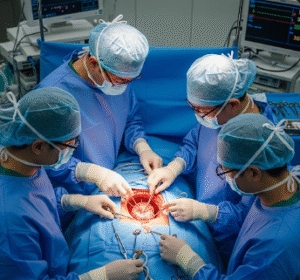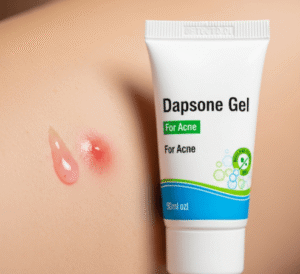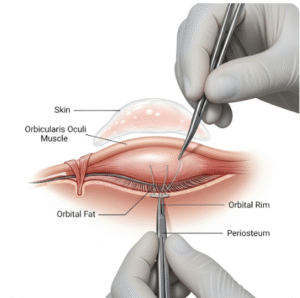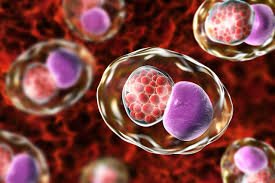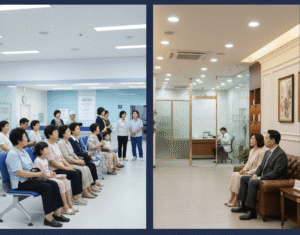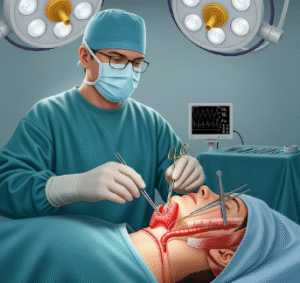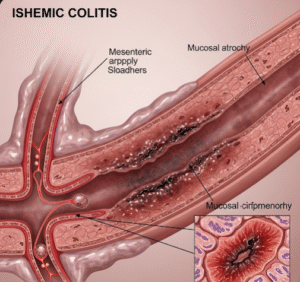What it is
A hormonal intrauterine device (IUD) is a small, T-shaped device placed inside the uterus to provide long-term birth control. It slowly releases progestin hormone, which prevents pregnancy by:
✔️ Thickening cervical mucus to block sperm entry
✔️ Thinning the uterine lining to prevent implantation
✔️ Sometimes suppressing ovulation
Hormonal IUDs in Korea are typically effective for 3–5 years, depending on the brand. They are reversible, meaning fertility returns quickly after removal.
➡️ Common brands available in Korea include Mirena, Kyleena, and Jaydess.
Why it’s done
Doctors recommend hormonal IUDs for several reasons:
🔹 Highly effective contraception – over 99% reliable
🔹 Long-term protection without daily reminders
🔹 Lighter, less painful periods after insertion
🔹 Treatment for heavy menstrual bleeding (menorrhagia)
🔹 Convenient option for women who cannot use estrogen-based birth control
💡 Highlight: A hormonal IUD is one of the most effective and low-maintenance contraceptive methods available in Korea.
Alternatives
While hormonal IUDs are popular, there are other contraceptive choices in Korea:
➡️ Copper IUD – hormone-free, effective for up to 10 years
➡️ Birth control pills – daily oral contraception
➡️ Contraceptive injections – hormone shots every 3 months
➡️ Vaginal rings or patches – hormonal delivery through skin or vaginal lining
➡️ Condoms – easily available, protect against STIs
⚠️ Note: Each method has pros and cons. A consultation with a Korean gynecologist helps determine the most suitable option.
Preparation
Preparation for a hormonal IUD insertion in Korea usually involves:
✔️ Doctor consultation – review of medical history and discussion of side effects
✔️ Pelvic exam – to check the size and position of the uterus
✔️ STI testing or Pap smear – sometimes recommended before insertion
✔️ Pain relief advice – doctor may suggest taking ibuprofen before the procedure
✔️ Scheduling – often done during menstruation, when the cervix is naturally softer
💡 Tip: Korean clinics are known for professional and gentle care, ensuring privacy and comfort during preparation.
How it’s done
The hormonal IUD insertion process in Korea is straightforward:
- Positioning → Patient lies on the exam table with feet supported in stirrups
- Speculum placement → A sterile speculum is inserted to open the vaginal canal
- Cleaning and measuring → Doctor cleans the cervix and measures uterine depth with a thin instrument
- IUD insertion → The folded IUD is placed inside the uterus using a small applicator tube
- String trimming → The doctor trims the IUD strings to remain in the vagina for later removal
⏩ The whole process takes about 5–10 minutes. Some women feel mild cramping, but it is usually brief.
💡 Highlight: In Korea, doctors often use ultrasound guidance to ensure accurate placement of the IUD.
Recovery
Recovery after hormonal IUD insertion is generally smooth:
✔️ Mild cramps or spotting may occur for a few days
✔️ Normal daily activities can be resumed immediately
✔️ Periods often become lighter and less painful over time
✔️ Regular check-ups are recommended after 4–6 weeks to ensure the IUD is in place
When to seek medical help:
➡️ Severe abdominal pain
➡️ Heavy or prolonged bleeding
➡️ Signs of infection (fever, foul discharge)
➡️ If you cannot feel IUD strings or suspect expulsion
💡 Important: In Korea, follow-up care is emphasized. Clinics often provide free or low-cost check-ups after insertion.
Treatment option in Korea
Korea offers excellent access to hormonal IUD insertion with:
⭐ Advanced gynecology clinics and university hospitals
⭐ Experienced Korean gynecologists trained in IUD procedures
⭐ Affordable prices compared to many Western countries
⭐ Availability of global brands like Mirena and Kyleena
⭐ Multilingual services in large hospitals for foreign patients
💡 Highlight: Korean clinics prioritize patient comfort, accuracy, and safety, making IUD insertion a smooth experience for both locals and international patients.
Key Highlights
✔️ Hormonal IUD provides long-term contraception (3–5 years)
✔️ Over 99% effective with quick fertility return after removal
✔️ Reduces heavy bleeding and cramps
✔️ Procedure takes only 5–10 minutes in a clinic
✔️ Korea offers advanced facilities and multilingual care



